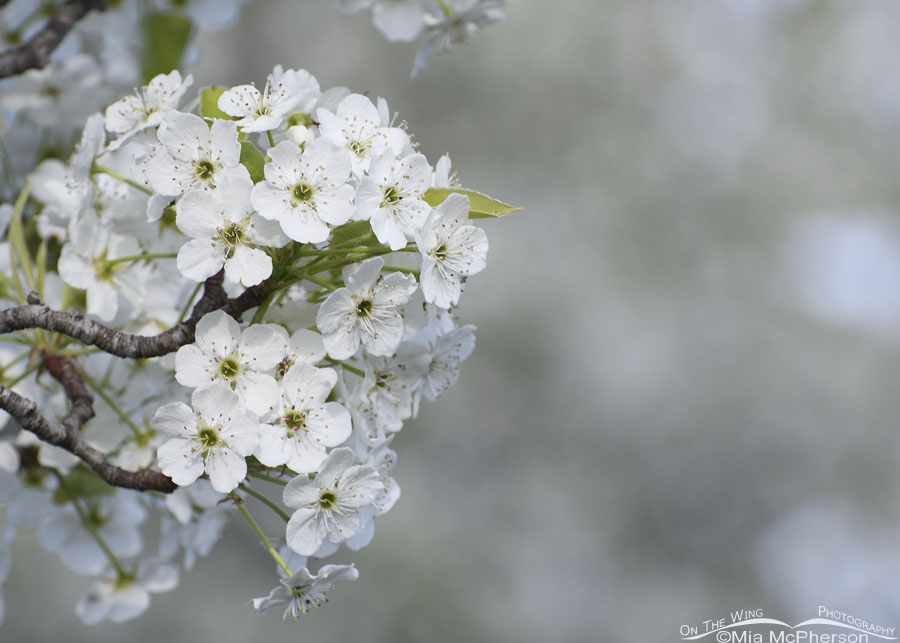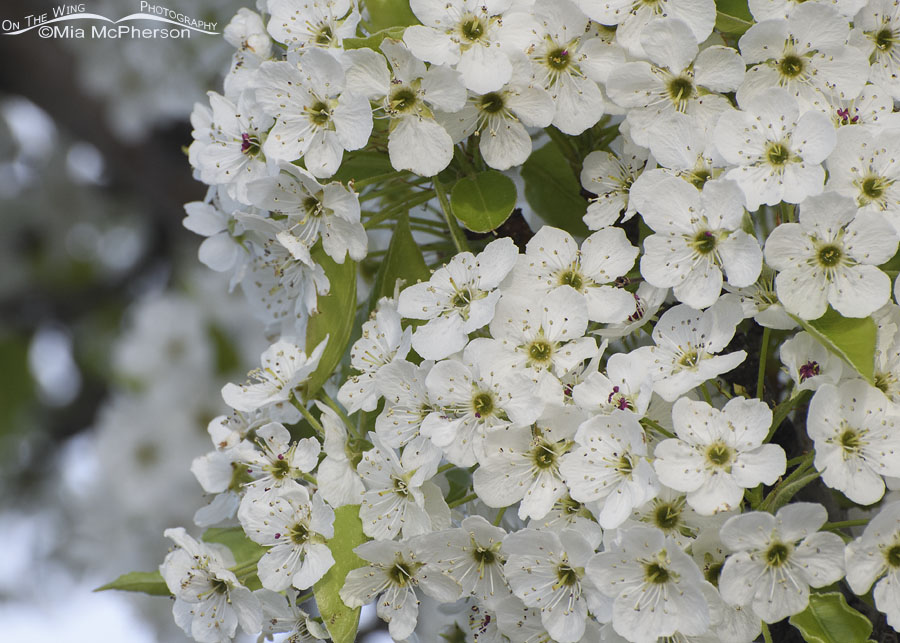On the first of May I took a series of blossoming Bradford Pear tree images. I’ve been meaning to do that for years to show that they are pretty, but…
 Bradford Pear blossoms – Nikon D500, handheld, f7.1, 1/500, ISO 640, +1.0 EV, Nikkor 70-300mm VR at 170mm, natural light
Bradford Pear blossoms – Nikon D500, handheld, f7.1, 1/500, ISO 640, +1.0 EV, Nikkor 70-300mm VR at 170mm, natural light
Bradford Pear trees are not good to plant.
Bradford Pear trees, or the Callery pear, are a species of pear tree native to China and Vietnam. They are most commonly known for their cultivar ‘Bradford,’ with its offensive odor, and are widely planted throughout the United States, increasingly regarded as an invasive species.
Not far from where I live, there is a street lined with Bradford Pears. The flowering period is extremely brief, lasting only about one week. The street looks lovely when the Bradford Pears are in bloom, but that doesn’t negate their negative impacts.
Those negative impacts include:
- Invasive species: Bradford Pear trees are considered invasive species, meaning they can outcompete native vegetation and disrupt the ecological balance of an area.
- Short lifespan: Bradford Pear trees have a relatively short lifespan of only 15 to 25 years, which means they require frequent replanting and can be costly to maintain.
- Weak wood: The branches of Bradford Pear trees are prone to breaking, especially during strong winds or heavy snowfalls. This can lead to property damage and personal injury.
- Susceptible to disease: Bradford Pear trees are susceptible to a variety of diseases, including fire blight, leaf spot, and pear decline, which can weaken the tree and eventually kill it.
- Limited wildlife value: Bradford Pear trees provide little to no wildlife value, as they do not produce fruit and have a dense, impenetrable canopy that provides little shelter.
 Blooming Bradford Pear blossom close up – Nikon D500, handheld, f9, 1/320, ISO 640, +1.70 EV, Nikkor 70-300mm VR at 220mm, natural light
Blooming Bradford Pear blossom close up – Nikon D500, handheld, f9, 1/320, ISO 640, +1.70 EV, Nikkor 70-300mm VR at 220mm, natural light
When the trees are blooming they are pretty but they provide very little benefit to native birds, insects, or animals. Some municipalities are banning the planting of these trees. I think that is a good thing.
Bradford Pears are not the only ‘bad’ trees to plant. The best trees, shrubs, and wildflowers to plant provide food and shelter for our native birds, animals, and insects. If they don’t, why waste the time, effort, or the precious water they need to grow them?
When given a choice, plant native.
There are many reasons why it is always best to plant native trees and shrubs, including:
- Adaptation to local climate: Native trees and shrubs have evolved over thousands of years to thrive in their local climate, so they are better adapted to the local weather conditions than non-native plants.
- Lower maintenance: Native plants generally require less maintenance than non-native plants because they are already adapted to the local climate and soil conditions. This means less watering, fertilizing, and pruning.
- Habitat for local wildlife: Native trees and shrubs provide habitat for local wildlife such as birds, butterflies, and insects, which can help maintain a healthy ecosystem.
- Soil stability: Native plants have deep roots that help stabilize soil and prevent erosion, which can reduce the risk of landslides and other natural disasters.
- Improved air quality: Trees absorb carbon dioxide and other pollutants from the air, which can improve air quality and reduce the impact of climate change.
- Water conservation: Native plants are adapted to the local rainfall patterns, so they require less watering than non-native plants. This can help conserve water resources, particularly in areas with limited water availability.
- Increased biodiversity: Planting native trees and shrubs can increase biodiversity in local ecosystems, which can help maintain a healthy and balanced environment.
- Reduced risk of invasive species: Non-native plants can sometimes become invasive and outcompete native plants, which can disrupt local ecosystems. Planting native trees and shrubs can help reduce the risk of invasive species.
- Cost savings: Because native plants require less maintenance, they can be more cost-effective over time than non-native plants that require more water, fertilizer, and pruning.
- Cultural significance: Native trees and shrubs are often culturally significant to local communities, and planting them can help preserve traditional knowledge and heritage.
Establishing native trees, shrubs, and plants can be done slowly over time. Going native in your yard and garden does not have to be done all at once. Additionally, taking the steps to go native can provide numerous benefits for both the environment, wildlife, and your personal property.
Life is good.
Mia
Click here to see more of my wildflower, shrub and tree photos.
Go native in your yard for bugs, birds, beauty and biodiversity


Great pics with a very informative commentary. I had no idea Bradford Pear trees were so problematic or that they are considered an invasive species. Fascinating. Thanks Mia.
I just planted 2 Bear Oaks (Quercus ilicifolia) … taken on advice from Doug Tallamy’s “The Nature of Oaks” — as oaks support the most species of caterpillars, 897 in the U.S. alone. We already have other key species: native cherry and birch… https://homegrownnationalpark.org/faq-2/what-insects-and-plants-by-doug-tallamy
Hear, hear.
I have never heard of these either. Thanks for the posting.
I always learn something on your blog, Mia
Much thanks